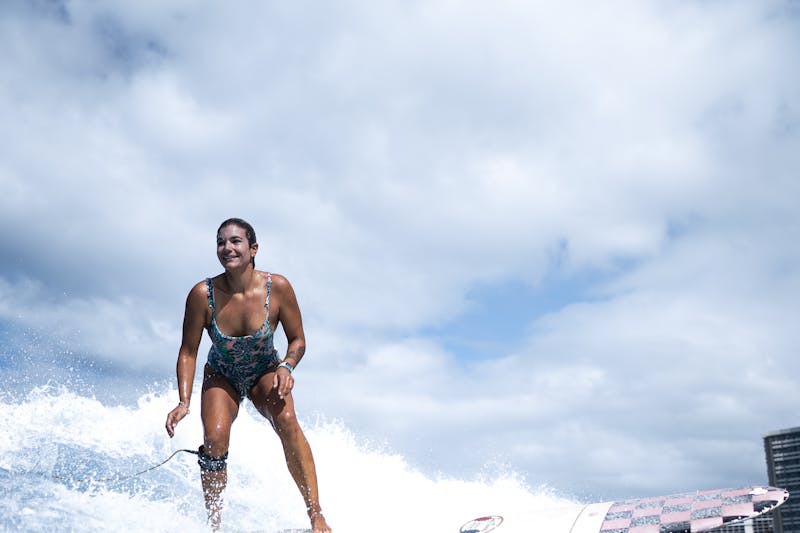 |
| stand-up paddle board |
Isn't it extraordinary how something as simple as standing and paddling can transport us into a state of tranquillity? Perhaps you've glimpsed a stand-up paddle boarder gliding effortlessly across the water, their board barely causing a ripple. You may have found yourself intrigued and eager to partake in this serene, yet physically challenging activity. But, where do you start, especially when it comes to purchasing your own paddle board?
This insightful piece aims to navigate you through the vibrant world of stand-up paddle boarding (SUPs), focusing primarily on understanding the different types available on the market and their respective performance. We will delve into the designs, materials, and shapes and how these elements dictate a board's performance in various water conditions. By the end of this journey, you'll be well equipped to make an informed decision as you prepare to purchase your own paddle board.
The Genesis of SUPs: Understanding Their Evolution
Before embarking on our detailed exploration, let's take a step back and appreciate how this popular water sport has evolved. Stand-up paddle boarding has roots tracing back to ancient cultures but has re-emerged recently as a popular sport, profoundly influencing surf culture and the recreational scene.
The simple design of the paddle board has grown more complex and diversified. Today’s market offers numerous SUP types to cater to various needs and preferences, ranging from all-arounders, surf, touring, racing, yoga, and inflatable, each delivering a unique paddleboarding experience.
Traditional SUPs were made entirely from foam or fibre-glass. However, present-day models feature modern construction materials like PVC or even carbon fibre, providing improved performance and durability.
Lastly, the boards have also exhibited design and shape transformations, refining user comfort, and enhancing performance metrics such as stability, glide, and speed.
The Paddle Board Spectrum: Deciphering the Types and Their Performance
Stand-up paddle boards are not created equal, and each type boasts specific characteristics that make them suitable for certain conditions or activities.
All-around paddle boards, commonly referred to as the 'jack of all trades', offer versatility, allowing you to enjoy both calm and somewhat choppy waters, therefore, a great choice for beginners.
Surf SUPs, with their narrower and shorter design, are built for wave riding. They have a swift response time but can be a bit challenging to balance on compared to other types.
Touring SUPs are distinguished by their pointed noses and sleek bodies, designed specifically for longer paddleboard journeys on flatwater environments.
The Great Race: Analyzing Racing SUPs
Racing stand-up paddle boards represent the elite class in the SUP market. They have sleek designs, unrivalled speed, and command high prices.
There are two primary types of racing boards: flatwater boards and downwind boards. Flatwater boards, with their longer and narrower shape, have excellent straight-line tracking, making them perfect for calm water. On the other hand, downwind boards, with their more pronounced rocker lines, are built to handle larger ocean swells.
Both types, however, share common traits like easily generating speed and maintaining it, showcasing superior glide, and having great tracking, all of which are critical for competitive paddling.
Despite offering impressive performance, racing boards might not be the best choice for beginners as they require a higher skill level to maneuver due to their narrower designs.
 |
| stand-up paddle board |
Inflatable Vs. Hard Boards: The Eternal Debate
The paddleboard market presents a major decision for buyers between inflatable and hard SUPs.
Inflatable SUPs offer the advantage of easy storage and transportation. They are also considerably more resilient in terms of impact resistance and offer good performance, making them an ideal choice for those who value convenience and durability.
Hard boards, on the other hand, reign superior in performance, delivering efficient gliding, speed, and maneuverability. They also offer a more authentic paddleboarding experience but lose out on convenience factors.
Ultimately, the decision between an inflatable and a hard board depends on the buyer's priorities and how they plan to use their SUP.
SUPs and Fitness: A Perfect Match
Who said paddleboards were only for leisure?
Yoga SUPs are wider and longer, allowing plenty of space for paddlers to execute their poses while maintaining stability. They are a perfect fusion of fitness and fun, providing a unique way to enjoy your yoga practice.
Fitness SUPs, built similarly to all-around SUPs but with added stability, allow for more high-intensity workouts on the water. They offer the perfect balance of strength, endurance, and balance training while being in the great outdoors.
Regardless of your motivation, paddleboarding can offer an effective and enjoyable way to stay in shape, adding that extra layer of enjoyment to your fitness routine.
Conclusion: Your Stand-Up Paddle Board, Your Choice
Stand-up paddle boarding is more than a water sport; it's a lifestyle, a form of exercise, a leisurely pursuit, and a mode of meditation. However, choosing the right SUP can be tricky. It all circles back to your preferences, skill level, and intended use.
Remember, the 'jack of trades,' all-around paddle boards, make a great starter board due to their versatility. If you're chasing the waves, a surf SUP would be a better fit, while a touring SUP is ideal for long, serene paddles in calm waters. Inflatable SUPs score high on convenience and durability, but if you prioritize performance, you might want to opt for a hard board.
In the vibrant world of SUPs, there's a board for everyone! And remember, the most important thing is to enjoy the journey, both on and off the water. So go ahead, dip your paddle in, and let the adventure begin!











No comments:
Post a Comment